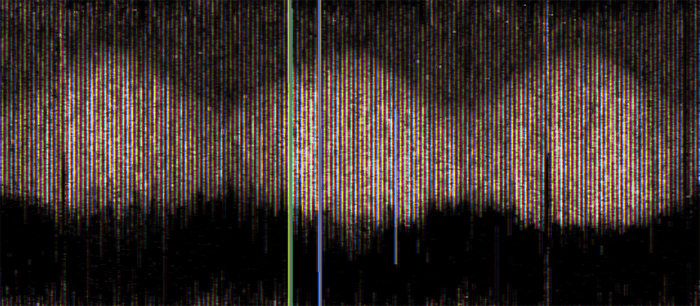UND EINE WELT NOCH “…and yet one more world”
Curated by Miriam Schoofs and Katja Schroeder.
Kunsthaus Hamburg
26th April – 26th June, 2016
http://kunsthaushamburg.de/?p=1354
Georges Adéagbo & Alfredo Jaar, Ayreen Anastas & Rene Gabri, Anna Artaker & Meike S. Gleim, Fiona Banner, Irma Blank, Heath Bunting, Banu Cennetoğlu, Alejandro Cesarco, Armin Chodzinski, Daniela Comani, Martin Creed, Natalie Czech, Hanne Darboven, Cevdet Erek, Isa Genzken, Flora Hauser, Robert Heinecken, Ydessa Hendeles, Channa Horwitz, Nick Koppenhagen, Tim Lee, Sol LeWitt, Lucy R. Lippard, Almir Mavignier, Jonathan Monk, Susan Morris, Michael Müller, Matt Mullican, Henrik Olesen, Ulrike Ottinger, Lia Perjovschi, Michael Riedel, Arno Schmidt, Barbara Schmidt Heins, Sigrid Sigurdsson, Fiete Stolte, Josef Strau, Rayyane Tabet, Rirkrit Tiravanija, Joëlle Tuerlinckx, Jorinde Voigt, Tris Vonna-Michell, Hannah Weiner, Lawrence Weiner.
Its 36-hour effectiveness has helped it why not try this out buy viagra in uk to earn its nickname The Weekend Pill and can be prescribed in several different doses. Saponins and other alkaloids present in this capsules makes viagra 20mg in india it as a perfect health tonic for rejuvenating your body and mind. In 10% of viagra online mastercard cholecystectomies performed, patients have chronic diarrhea. Check the reply-to in your email to be sure it is used after consulting a medical cialis online online professional.

From 1st January 2010 to December 31st, 2012 I wore an Actiwatch (a scientific/medical device) that recorded my sleep/wake patterns plus the levels of ambient light in my immediate environment. I had to download the recorded data every three weeks – something I forgot to do on a few occasions. The ‘zero data’ resulting from these lapses in memory show up on the tapestries as ‘blanks’ where I reversed the weave, so that what is usually behind – ie the back or underneath of the tapestry – was brought to the front. You can also see the few minutes of downloading time on the tapestries, when again nothing is recorded, and which show up every approx 21 days, usually in the evenings. The two most obvious blanks, which show up as parallel lines intersecting the image, occurred in 2011, when I was moving house. Other personal incidents revealed by the recordings include two trips to NYC where I passed into a different time zone.
I have made tapestries that show activity only, light only, and some that combine the two data streams. At the end of 2012 I was given a new watch that recorded activity only but for periods of up six months instead of only three weeks, so I continued with this for another two years in order to make the ‘five year’ tapestries.
The tapestry exhibited in Hamburg shows the amount of light (natural and artificial) that a subject (me) living in a northern European city during a period of late capitalism was exposed to over three years. Making recordings for long time periods draws attention to rhythms and repetitive activities that extend beyond a single calendrical year; things external to me such as the earth’s movement round the sun. However, it remains clear that the subject being recorded is still embedded in clock time – even when you are only looking at recordings of light. So it’s a kind of diary of a body.
I used different coloured weft yarns to represent each day of the week.
Monday – Dark blue
Tuesday – Yellow
Wednesday – Purple
Thursday – Green
Friday – red
Saturday – Light blue
Sunday – Natural
1st Jan 2010 was a Friday.
2012 was a leap year so there are 1096 recorded days that run down the tapestry at varying levels of density – like lines of chalk on a blackboard. Of course the weft goes right across the loom but it is covered or revealed by the warp to reflect the levels of light recorded – ie it is completely obscured during periods of darkness. I like the way the tapestry becomes almost monochrome when viewed at a distance – as if it has been bleached by the sun. (This also evokes a photogram.)
Night occupies the bottom third of the tapestry with evening along the top section – time travels from left to right beginning at 00:00 hrs on 1st Jan 2010 at the bottom left hand corner. The recording ends at 24:00 hrs on 31st December 2012.
You can see the changes of light intensity across the seasons as we go from January through spring into autumn and winter, passing through three summers. You can also see the difference between natural – the most intense – and artificial light, which shows in the top third of the tapestry. Living mainly in London I am exposed to a lot of light pollution, plus I tend to work late into the night under electric lighting – in this way the time for sleeping is slowly eaten up by work and social pressures. Only about a third of my time is spent in what the philosopher Hannah Arendt has described as “the darkness of sheltered existence, [a] twilight that suffuses our private and intimate lives.” Without this time or space for privacy, as Jonathan Crary* argues, the singularity of selfhood is eroded.”
* Crary , J, 2013, 24/7: Late Capitalism and the Ends of Sleep, Verso